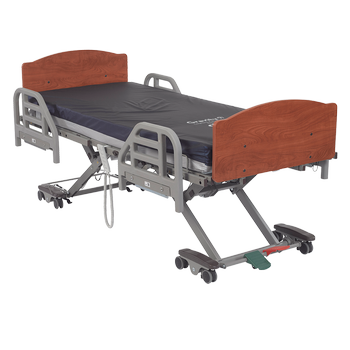Essential Features of Quality Medical Beds
Quality medical beds incorporate several essential features that directly impact patient safety and comfort. Height adjustability is fundamental, allowing caregivers to position beds at optimal working heights while enabling safe patient transfers. This feature significantly reduces the risk of caregiver injury and improves efficiency in patient care delivery.
Trendelenburg and reverse Trendelenburg positioning capabilities are critical for various medical procedures and patient conditions. These positioning options support respiratory function, improve circulation, and facilitate specific treatment protocols. Additionally, side rail systems provide fall prevention while maintaining patient independence and dignity.
Modern medical beds also feature advanced mattress support systems that distribute pressure evenly across the patient's body. These systems work in conjunction with specialized therapeutic mattresses to prevent pressure injuries and promote healing in existing wounds. The combination of proper support and pressure redistribution is essential for long-term patient care.




